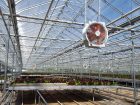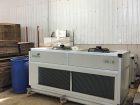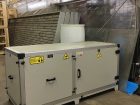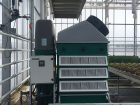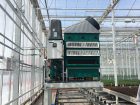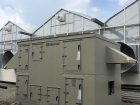
Features
Structures & Equipment
Ventilation
Dehumidification – the silver bullet to energy costs?
Research project plans to evaluate heat recovery dehumidification technologies in trials.
July 9, 2018 By Dr. Jeanine West Dr. Ann Huber and Dr. Jingjing Han
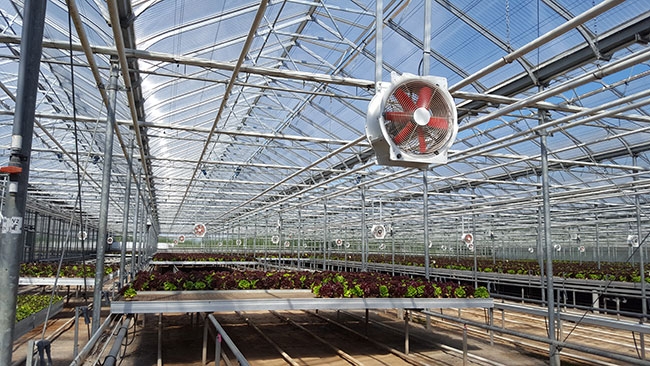 A. Huber
A. HuberEvery cold-climate greenhouse grower experiences it – it’s cold outside, the heat is on, but the relative humidity levels need to come down to prevent disease. The solution? The vents get opened to get rid of that moist air and exchange it for drier air – except the greenhouse loses heat in the process!
Greenhouse growers are facing increased energy costs and are concerned about fossil fuel emissions, so they’re looking for alternative/green heat sources or ways to decrease their energy consumption. Energy curtains have been widely adopted by greenhouse growers to decrease energy consumption, but curtains cannot be closed when humidity levels rise, therefore limiting their value. Heat recovery dehumidification technology represents a new approach for removing humidity without the resulting waste of energy associated with venting. Using this technology means a significant break from traditional growing practices, and very few greenhouses have invested in this equipment to trial at their farms. However, heat recovery dehumidification technology companies advertise significant energy savings for greenhouse operations – up to a 60 to 70 per cent decrease in fuel consumption!
Major providers of this technology are based in Israel, and the technology is utilized in European commercial and institutional buildings to manage humidity for human health. Its distribution in North America has really just been for the last decade for similar uses, with very limited adoption globally to manage humidity in the greenhouse sector. New technology providers are based in North America, including Nortek Air Solutions in Saskatchewan. In Canada, there are only a handful of greenhouses using heat recovery dehumidification technology, meaning there is very little objective information available to growers on choosing the right system and adjusting their growing practices. Growers investigating this option must rely solely on information from sales representatives. Since the technology is so new, Flowers Canada (Ontario) Inc. partnered with vegetable, herb and floriculture greenhouse growers to trial this technology at their farms, so the performance and implications of this technology could be evaluated.
There are several technologies on the market that claim substantial energy savings and effective control of greenhouse humidity:
- DryGair dehumidifier – mechanical refrigeration dehumidification (conventional system) that also recovers heat from the moist air
- Agam VLHC (ventilated latent heat converter) dehumidification system – dehumidification by passing moist air across a chemical desiccant matrix (drying agent) converting it to warm dry air; it can also filter and remove airborne disease spores
- Nortek HRV – a heat-recovery ventilation system that exchanges indoor and outdoor air while recovering some portion of heat from the exhausting indoor air
A fourth system is under development by Nortek Air Solutions and the University of Saskatchewan that combines a novel desiccant dehumidification technology with air-to-air heat-exchange ventilation called the Nortek ERV (Energy Recovery Ventilation). All four of these systems are being tested in production facilities; a prototype of the Nortek ERV is being developed for demonstration under this project.
To compare these systems effectively and provide greenhouse growers with information about the impact on different crops and production systems, our research team installed:
- DryGair and Agam systems in similar-sized zones at an herb greenhouse
- DryGair, Agam and Nortek HRV systems in similar-sized zones at a floriculture (potted) greenhouse
- The Nortek ERV system will be installed at a vegetable greenhouse and compared to an adjacent control zone
The following data is being collected over a one-year period:
- Power consumption by the units
- Total energy required (i.e. fuel consumption, electricity) for each zone with an installed technology compared to control zones (through energy, thermal, and flow sensors connected to the computer control system)
- Relative humidity levels in the greenhouse
- Outdoor climate data
- Disease pressure and crop health information
- Determination of overall energy savings (energy per unit yield) for each system tested over traditional production systems
A large part of this project is focused on getting the results out to greenhouse growers – so look for updates on this research in 2019!
The authors would like to acknowledge funding for this project from the Greenhouse Renewable Energy Technologies (GRET) Research & Development initiative, the participating farms, Ontario Greenhouse Vegetable Growers and Enbridge Gas Distribution Inc.
The views expressed in this article are the views of the research team and do not necessarily reflect those of their funding partners.
Dr. Jeanine West is the environmental specialist at Flowers Canada (Ontario) Inc., jeanine@fco.ca. Dr. Ann Huber is the environmental microbiologist at the Soil Resource Group, ahuber@srgresearch.ca. Dr. Jingjing Han is the research engineer with Flowers Canada (Ontario) Inc., jingjing@fco.ca.
Print this page
